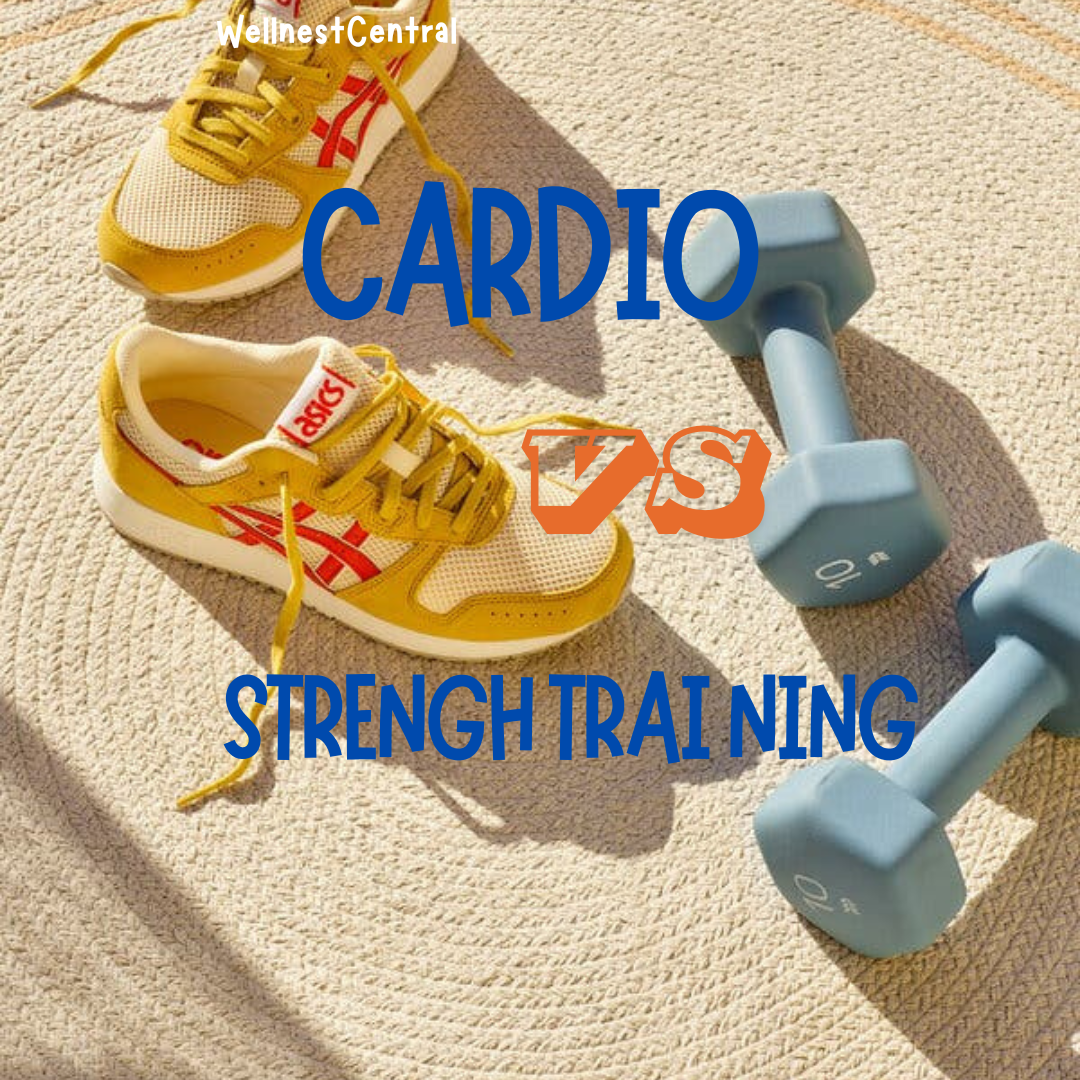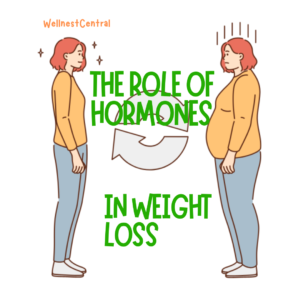Introduction
Cardio vs. Strength Training: Finding the Right Balance for Effective Weight Loss is a topic that many people grapple with on their fitness journeys. Should you prioritize running over weightlifting? Which will help you achieve your weight loss goals faster? While cardio and strength training each have unique benefits, finding the right balance can accelerate your weight loss and help you maintain results long-term. Let’s break down the advantages of each and how to combine them effectively for your best results.
1. Cardio and Its Benefits for Weight Loss
What is Cardio?
Cardiovascular exercise, or “cardio,” includes any activity that increases your heart rate and breathing. Common forms of cardio include running, cycling, swimming, dancing, and even brisk walking.
Calories Burned & Fat Loss:
Cardio is known for its ability to burn a large number of calories per session, which makes it effective for weight loss, especially in the short term. The higher your heart rate, the more calories you burn, and therefore the faster you may lose fat.
Health Benefits Beyond Weight Loss:
Besides weight loss, cardio improves cardiovascular health by strengthening the heart and lungs, boosting mood through endorphin release, and enhancing endurance.
When to Prioritize Cardio:
If you’re new to exercise or looking to burn calories quickly, cardio is a great starting point. Activities like running, biking, and jumping rope can offer a great calorie burn, especially when done consistently at moderate-to-high intensity.
2. Strength Training and Its Role in Weight Loss
What is Strength Training?
Strength training, or resistance training, includes exercises that improve muscle strength and endurance. This could be through weightlifting, bodyweight exercises (like squats and push-ups), or using resistance bands.
The Afterburn Effect (EPOC):
Unlike cardio, which burns calories primarily during the workout, strength training burns calories both during and after exercise. This is known as the afterburn effect or Excess Post-Exercise Oxygen Consumption (EPOC), where your body continues to burn calories at a higher rate for hours after your workout as it works to repair and build muscle.
Muscle Growth & Metabolism:
By building lean muscle mass, strength training increases your resting metabolic rate (RMR). Muscle is metabolically active, which means that even at rest, your body will burn more calories. This makes strength training crucial for long-term weight loss and weight maintenance.
When to Prioritize Strength Training:
Strength training is especially important if you’re aiming to change your body composition, build muscle, or maintain your metabolism as you age or lose weight.
3. Cardio vs. Strength Training: A Direct Comparison for Weight Loss
Calorie Burn Comparison:
- Cardio: Tends to burn more calories per minute during the actual workout, making it effective for short-term weight loss.
- Strength Training: Builds muscle that increases your metabolism, leading to greater calorie burn throughout the day, not just during exercise.
Long-Term Weight Maintenance:
While cardio is effective for burning calories during a session, strength training is better for long-term weight maintenance. This is because muscle tissue burns more calories at rest than fat tissue, which can prevent weight regain.
Benefits for Body Composition:
- Cardio primarily focuses on reducing overall body fat but does little for muscle tone.
- Strength Training helps shape, tone, and define your muscles, giving you a more sculpted look and improved body composition.
4. Finding the Right Balance: A Combined Approach
For effective weight loss, a combined approach works best. Cardio helps you burn calories, while strength training builds muscle to support a healthy metabolism and toned appearance.
Importance of Personal Goals:
Balance your workouts based on your goals:
- If fat loss is your main goal, include a bit more cardio.
- If you aim to improve body composition and maintain muscle, strength training should be prioritized.
Sample Balanced Weekly Workout Plan:
- 3 Days of Cardio: Engage in moderate-intensity cardio like brisk walking, jogging, cycling, or swimming.
- 2-3 Days of Strength Training: Include full-body workouts targeting all major muscle groups (arms, legs, back, and core).
- Rest Days and Active Recovery: Use 1-2 days for rest or active recovery like yoga, stretching, or light walking to prevent overuse injuries and support recovery.
5. The Pros and Cons of Cardio-Only Workouts
Pros:
- Quick Calorie Burn: Effective for burning calories and shedding fat in a short period.
- Improves Heart Health: Enhances cardiovascular endurance, lung capacity, and heart health.
- Adaptability: Easy to start and suitable for all fitness levels.
Cons:
- Risk of Muscle Loss: Excessive cardio can lead to muscle loss, which may slow metabolism over time.
- Plateau Risk: The body can adapt quickly to repetitive cardio, reducing its effectiveness if not varied.
- Injury Potential: High-impact cardio (like running) may lead to repetitive strain injuries.
6. The Pros and Cons of Strength Training-Only Workouts

Pros:
- Increased Metabolism: Building muscle leads to a higher metabolic rate, helping you burn more calories throughout the day.
- Body Toning: Helps define and tone muscles, improving overall body composition.
- Functional Strength: Enhances bone density, joint strength, and daily functional movement.
Cons:
- Fewer Calories Burned During Workout: Strength training burns fewer calories per session compared to high-intensity cardio.
- Recovery Time Needed: Muscles require time to recover after strength training sessions, so it’s essential not to overdo it.
- Potential Intimidation for Beginners: Strength training can feel overwhelming for newcomers without guidance or proper technique.
7. Cardio and Strength Training for Different Weight Loss Goals
For Fast Fat Loss:
Prioritize more cardio but ensure at least 2 strength training sessions per week to prevent muscle loss and support metabolism.
For Toning & Definition:
Focus on strength training 3-4 times a week with moderate cardio sessions for heart health and to maintain leanness.
For Beginners in Fitness:
Start with low-impact cardio like walking or swimming and introduce bodyweight strength exercises to build a foundational level of fitness.
8. High-Intensity Interval Training (HIIT): The Best of Both Worlds
What is HIIT?
High-Intensity Interval Training (HIIT) is a type of exercise that alternates short bursts of high-intensity exercise with periods of low-intensity recovery. HIIT combines the benefits of both cardio and strength training.
Benefits of Combining Cardio and Strength:
HIIT workouts maximize calorie burn in a short amount of time, build muscle, and improve cardiovascular health. HIIT also enhances the afterburn effect (EPOC), where calories are burned even after the workout is finished.
Examples of HIIT Workouts:
- Bodyweight Circuits: Squats, lunges, push-ups, burpees, and mountain climbers.
- Cardio-Strength Mix: Short sprints followed by resistance band exercises or kettlebell swings.
When to Use HIIT:
HIIT is particularly useful for those with limited time who want quick, efficient workouts. It’s also great for overcoming weight loss plateaus.
9. Recovery and Rest: The Key to Success
Why Recovery Matters:
Recovery is essential to allow muscles to repair, grow, and get stronger. Overtraining can lead to injury, fatigue, and a stall in weight loss progress.
Active Recovery Days:
Incorporate gentle activities like yoga, stretching, foam rolling, or leisurely walks on rest days to promote circulation and flexibility without overtaxing your muscles.
Proper Sleep & Nutrition:
Adequate sleep (7-9 hours a night) and a balanced diet with protein, carbs, and healthy fats are crucial for muscle recovery, performance, and overall progress.
10. Customizing the Balance for Sustainable Results
Listen to Your Body:
Your body will tell you when it’s tired, overworked, or ready for more intensity. Pay attention to your energy levels, soreness, and overall mood when determining the right balance of cardio and strength training.
Modify Based on Progress:
Check in with yourself every few weeks to assess how your routine is working. Are you seeing the results you want? Are you enjoying your workouts? Adjust your cardio and strength training balance accordingly.
Long-Term Consistency Over Perfection:
The most important factor in weight loss is consistency. A balanced mix of cardio and strength training, paired with a healthy diet and lifestyle, will help you achieve your weight loss goals sustainably.
Conclusion: Finding Your Balance for Effective Weight Loss
Cardio and strength training each play unique and essential roles in weight loss. While cardio can help burn calories quickly, strength training builds muscle and supports long-term fat burn. Finding the right balance based on your goals, preferences, and lifestyle will allow you to maximize results, feel energized, and enjoy your fitness journey. Remember, consistency is key, and the perfect balance is the one that fits best into your life.
Call to Action
What’s your favorite type of exercise? Share your experience balancing cardio and strength training in the comments, and don’t forget to subscribe for more fitness and weight loss tips!
FAQs
1. Is cardio or strength training better for burning fat?
Both have benefits—cardio burns more calories during a session, while strength training builds muscle to increase calorie burn long-term.
2. How many days a week should I do cardio vs. strength training?
A balanced plan usually involves 3 days of cardio and 2-3 days of strength training, but you can adjust based on your goals and fitness level.
3. Can I lose weight with just strength training?
Yes! Strength training can help you burn fat, build muscle, and improve metabolism, but adding some cardio may boost heart health and accelerate calorie burn.
4. Can HIIT be my only form of cardio and strength training?
HIIT is efficient for both cardio and strength, but mixing other forms of exercise can provide variety and prevent overuse injuries.
5. Is it okay to do cardio and strength training on the same day?
Yes, doing both on the same day is fine. Just make sure to warm up, cool down, and listen to your body to avoid overtraining.




